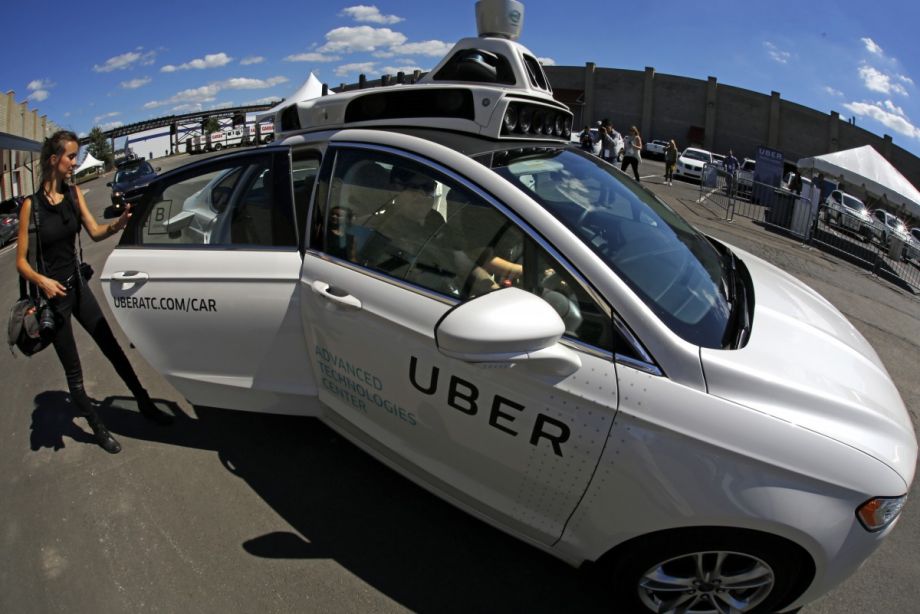In early 2017, San Francisco’s SoMa district will be getting a new burger joint that gives a glimpse into the way machines could fill multiple jobs within single company locations across the U.S. Its star cook is an automated factory line that preps, cooks and packages burgers at a rate of 400 sandwiches per hour.
In fact, a new report by the National League of Cities highlights that within two decades, as many as 47 percent of jobs in the country could be put at risk by new breakthroughs in robotics and artificial intelligence like this one. Authors Nicole DuPuis and Brooks Rainwater wrote and researched “The Future of Work,” which was released Wednesday, to give city governments a heads up.
Job requirements and employer demands, they argue, are going to be changing fast, so now’s the time to get started in preparing for a shift that could look like, in terms of impact, the Industrial Revolution.
More robots doesn’t necessarily mean the human race is bound for one massive layoff. But there will be some positions cut, especially as companies that rely on service-style jobs in office administration and retail — which make up about a quarter of the U.S. labor force — pursue automation to save money.
“Unless the city can attract and retain other growing employment sectors during these 15 years, structural unemployment [across the country] will increase by 3 percent,” says DuPuis.
The report briefly touches on ways this transition can complicate another longstanding issue: providing economic opportunity to low-income communities, or communities with barriers to employment or secondary education.
“Policy choices will be critical, as the gains to society could be more equally dispersed or — following recent historical trends — concentrated at the top of the income pyramid,” note the authors. “Those who focus on how best to utilize technological change within their cities to benefit community members will be the big winners in this economy.”
DuPuis says the report should prompt city leaders to continue working closely with employers to build up job pipelines from these communities. She also encourages cities to look into progressive policies that increase the quality of living — and therefore economic mobility — of everyone.
Building up funding to support entrepreneurs and new startups is one key approach. Another is setting into law paid family sick leave, portable benefits and higher basic income through minimum wage increases “to build out a new safety net for this new economy.”
The influence of unions has shrunk considerably in the U.S. over the past 50 years, with a membership drop from 20 million in 1979 to 14.5 million at the start of this decade. As those numbers have gone down, we’ve seen workers transition into new, multitiered approaches in how they make a living.
“Fifty years ago it was common for individuals to remain in the same job for the entire duration of a career,” says DuPuis. “Today that career trajectory is quite rare.” People hold a number of jobs over the course of their lives, she adds, and often hold multiple jobs at once. Meanwhile, the balancing act between employer costs and workers’ general priority for a less stressful work-life balance has led to the increase of freelance workers, which now make up 34 percent of the country’s workforce.
But echoing the focus of major conferences on the future of urban development, like the Habitat III conference held last month in Quito, Ecuador, the report and its authors stress that it’s up to cities to make sure every class and color of people is included in the transition into labor economies that are more fluid, and automated, in nature.
In Pittsburgh, where NLC members are currently gathering along with an estimated 3,000 elected officials for the City Summit conference, Mayor Bill Peduto says his city is a perfect example of an urban area that’s using the new demands of automation to provide employment gains.
Nearly a quarter of the city’s population lives in poverty, yet there’s going to be an anticipated 80,000 jobs to fill over the next 10 years, according to the Allegheny Conference on Community Development.
That organization is a joint effort led by the Pittsburgh Regional Alliance, Pennsylvania Economy League of Greater Pittsburgh and Greater Pittsburgh Chamber of Commerce to prepare the workforce for jobs that demand high-skill qualifications, in areas like IT and advanced manufacturing. Peduto says groups like this are working with the government, for example, to help train workers from low-income communities in installing sensors throughout the city that track air quality, weather, noise pollution and traffic to profile how livable different neighborhoods are.
It all goes back to Pittsburgh’s role as the first city in the U.S. to offer a Ph.D. in robotics, at Carnegie Mellon University. That marked the start of a growing industry that has since attracted major employers like Uber, who is building out its self-driving car prototypes in the city in a program that’s currently employing around 600 people.
In the early 1980s, Pittsburgh had an unemployment rate of nearly 19 percent and was losing around 4,000 residents a month who fled the city for economic opportunity elsewhere. Now it has the second-highest economic mobility rating among large U.S. metropolitan areas. But going forward, it still has a lot of work to do to make sure the small tech booms spurred by the success of robotic programs like Carnegie Mellon’s are extended, through education and training for high-skilled jobs, to the city’s impoverished communities.
Especially, according to the report’s authors, if it wants its economy to remain healthy in the face of a wave of automation.
“It took 30 years to be able to see all of this happen,” says Peduto. “But in the 30 years it’s happened, our economy has completely changed. Now, we want to build a Pittsburgh for all.”

Johnny Magdaleno is a journalist, writer and photographer. His writing and photographs have been published by The Guardian, Al Jazeera, NPR, Newsweek, VICE News, the Huffington Post, the Christian Science Monitor and others. He was the 2016-2017 equitable cities fellow at Next City.
















